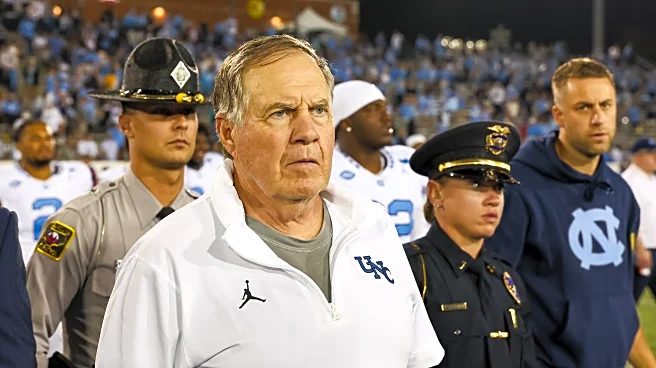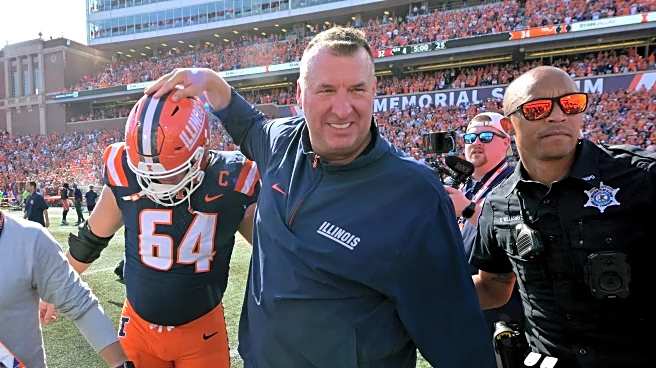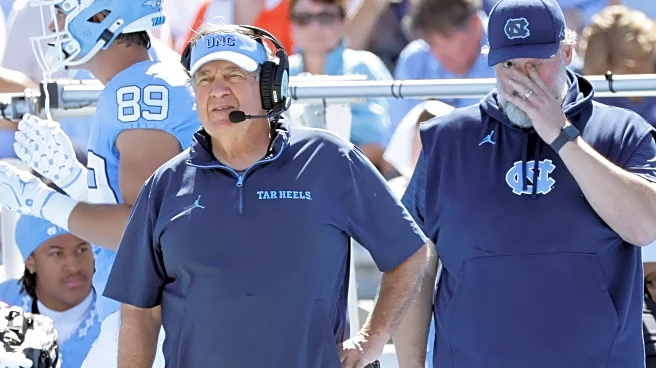What's Happening?
The NCAA has established targeting rules in college football to enhance player safety by penalizing dangerous hits. Targeting is defined as a player aiming at an opponent to attack with forcible contact beyond a legal tackle or block. The rule, introduced in 2008, has evolved to include penalties such as a 15-yard penalty and player disqualification. If targeting occurs in the first half, the player is disqualified for the remainder of the game. If it occurs in the second half, the player is suspended for the first half of the next game. The rule aims to protect defenseless players, and video review is mandatory to confirm or deny targeting penalties. The NCAA's targeting rule differs from the NFL's unnecessary roughness penalty, which does not automatically disqualify players unless the action is deemed flagrant.
Why It's Important?
The targeting rule is crucial for player safety, addressing concerns about traumatic brain injuries in college football. By penalizing dangerous hits, the NCAA aims to reduce the risk of concussions and other serious injuries. This rule impacts how games are officiated and can influence game outcomes, as seen in controversial calls during high-stakes matches like the Fiesta Bowl and Peach Bowl. The rule also affects player behavior, encouraging safer play and potentially reducing aggressive tactics. The targeting rule reflects broader efforts in sports to prioritize athlete health and safety, influencing coaching strategies and player training.
What's Next?
The NCAA may continue to refine targeting rules to address ongoing controversies and improve clarity for players and coaches. Future adjustments could include differentiating levels of targeting based on intent or impact, as suggested by some stakeholders. The NCAA might also enhance educational efforts to ensure players and coaches understand the rule's implications. As player safety remains a priority, the NCAA could explore additional measures to prevent injuries, such as improved equipment standards or further rule modifications. Stakeholders, including coaches and players, are likely to engage in discussions about the rule's effectiveness and potential improvements.
Beyond the Headlines
The targeting rule highlights ethical considerations in sports, balancing competitive play with player safety. It raises questions about the responsibility of athletes and coaches to prioritize health over aggressive tactics. The rule's implementation reflects a cultural shift towards valuing athlete well-being, potentially influencing other sports to adopt similar measures. Long-term, the targeting rule could contribute to a decrease in sports-related injuries, impacting healthcare costs and player career longevity. It also underscores the role of technology in sports officiating, with video reviews becoming integral to ensuring fair play.












